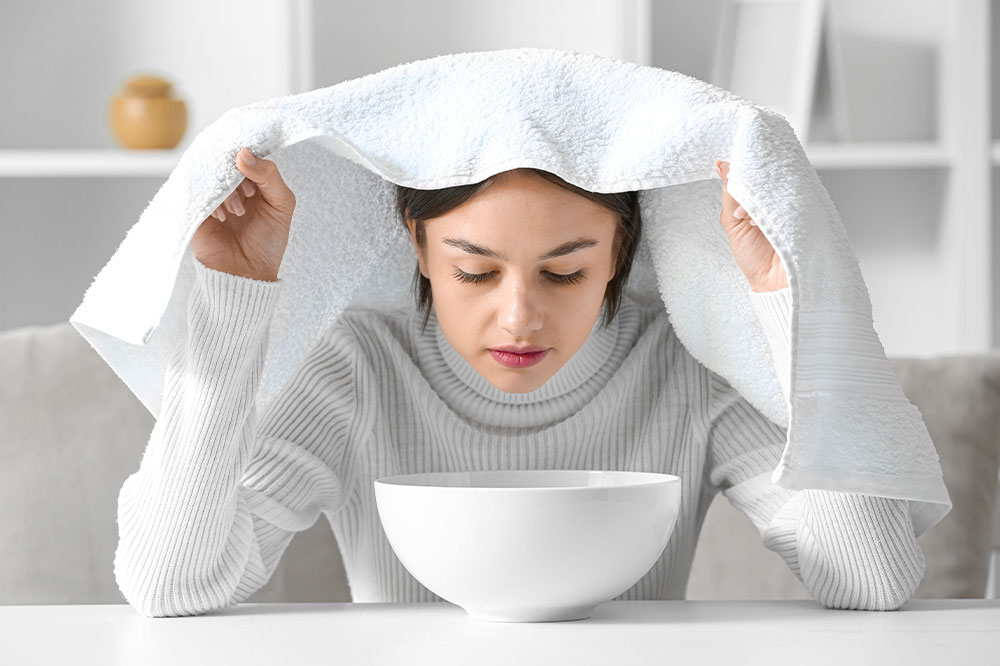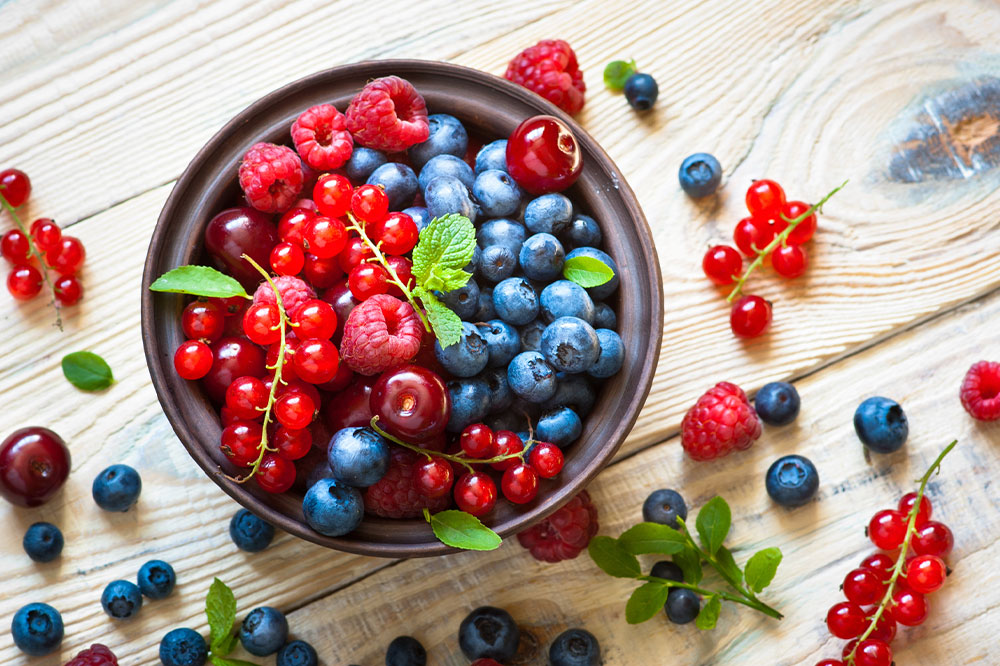Natural remedies and foods to help relieve sinus

We have four pairs of sinuses, hollow spaces in our head right behind our eyes and nose. Their role is to make thin mucus which drains out and keeps the bacteria away from our nose. If the sinuses get blocked or inflamed, bacteria can start growing there, or fluids may fill the hollow space. A runny or stuffy nose, yellow or green discharge, sinus pressure, or facial pain are typical symptoms of sinus congestion.
Medical management of sinus congestion
A runny nose and yellow or green discharge characterize a sinus infection that may last about ten days. It can also accompany a fever, pain in our teeth and ears, bad breath, and headache. Very severe infections could last up to 12 weeks, and you may need continuous treatment to prevent further worsening of the symptoms. In the beginning, you can increase your fluid intake and use over-the-counter nasal sprays to relieve the infection.
Since it is a viral or bacterial infection, it may go away in about two weeks without the need for antibiotics, as they may be ineffective in treating viral infections. But once you are infected, if you notice that the symptoms are severe and your fever or headache does not reduce, visit a doctor and get a diagnosis. Along with some prescription treatments, doctors also advise you to follow a few time-tested natural remedies that are most effective in relieving sinus congestion. If your symptoms are mild, natural remedies can cure the congestion without going to a doctor. Some of the time-tested natural remedies that work wonders to relieve stuffiness, congestion, and headache associated with sinus congestion are:
Steaming
The first thing that you can do once you sense the congestion is to do steam inhalation. The warm steam helps to loosen the mucus and also relieves inflammation. Though steaming cannot cure a sinus infection, it can help drain the mucus and help you breathe better. Follow these simple steps for steam inhalation:
- Heat about one to two liters of water until it begins to boil.
- Place a bowl on a counter or a dining table at a safe distance away from your body.
- Pour the water into the bowl and keep your face about 10 inches above the bowl.
- Drape a towel over the bowl and cover yourself well so that the steam cannot escape.
- Close your eyes and inhale the steam through your nose for about five minutes.
- Repeat the process thrice a day and twice when the symptoms improve.
- Add a couple of drops of eucalyptus oil or other essential oils to clear the sinus faster.
The only thing that you have to be careful about is avoiding accidents that can cause the hot water to fall on your lap. If you want steam inhalation for kids, use steam inhaler devices or safe vaporizers. If you cannot do an inhalation, a warm shower can help too.
Nasal irrigation
Nasal irrigation is another easy-to-do home remedy for congestion. You pour salt water or saline solution into one nostril, tilt your head, and the saline solution flows through the nasal cavity and out through the other nostril. As it drains out, it also flushes out the mucus, bacteria, or allergens. It is important to use salt water only for nasal irrigation. There are many devices that you can purchase in drugstores for this purpose, like readymade pre-filled containers, bulb syringes, or neti pots. Besides, you can do nasal irrigation twice daily for it to be effective.
Warm compresses
If you do not want to try the more complicated remedies like inhalation or irrigation, you can dip a washcloth in warm water, squeeze it dry and place it on the places that ache, like the forehead, front and back of the neck, and cheeks. The heat from the compress will help drain the mucus and help you breathe better.
Essential oils
Essential oils are concentrated oils from herbs and flowers that help cure diseases. Some of the oils that are effective remedies for sinus congestion include peppermint oil, eucalyptus oil, tea tree oil, oregano oil, clary sage, lavender oil, and rosemary oil.
You can use the essential oil directly. Add one drop of these oils to a handkerchief or tissue and inhale it. It can help reduce the irritation that you may feel in the nose. You can add it to the steam inhalation, your bath, or use it in a diffuser. If you want to apply it on your skin, particularly on your neck, behind the ears, forehead, or nose, mix a drop of oil with five to six drops of carrier oil, like coconut oil and rub it there.
Herbal teas
Doctors advise drinking fluids if you have congestion as it can help to thin the mucus and drain it faster. Herbal teas are one way of increasing your fluid intake. Herbal teas have medicinal value; they are warm, can soothe your throat and nose and help you calm down. You can add a few pinches of the herb or use a herbal tea bag in hot water and allow it to steep for a few minutes. Drink it warm. Have about four to five glasses of these warm teas to see relief from sinus congestion. Some effective teas are peppermint, ginger, chamomile, turmeric, nettle, licorice root, and mint.
Soups and broths
Soups and broths are saviors for those going through a sinus infection. They are warm, contain the benefits of vegetables and meat, flavored with healthy spices and, most importantly, some black pepper. They are nutritious. You can make large batches, store them in the freezer, and heat them whenever possible. Some soups that are ideal for sinus congestion are chicken soup with ginger or rice, roasted butternut squash, apple, and garlic soup. You can also have mixed vegetable soup, garlic and ginger soup, carrot turmeric soup, hot and sour shrimp soup, or bone broth.
Fruits and vegetables
You may feel extremely sick and have no appetite in the first few days of infection, but make it a point not to starve. Start with soups and broths, and once you feel better, you can eat fruits if not a proper meal. Fruits are filled with antioxidants that strengthen the immune system and nourish your body. Some of the fruits and vegetables that are best suited for sinus infection are pineapples, papaya, citrus fruits, and berries.


